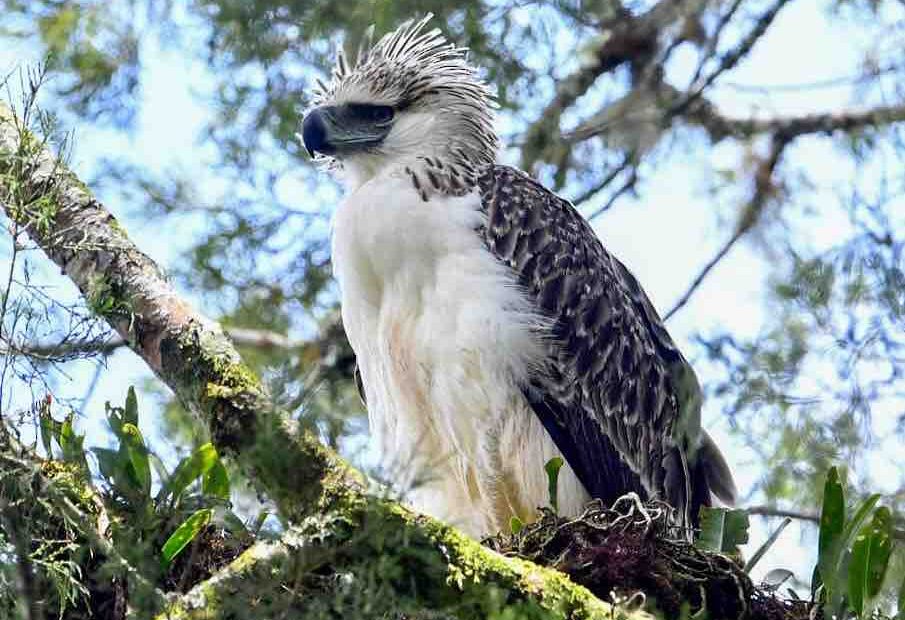The Great Philippine Eagle, a majestic and awe-inspiring bird of prey, stands as a symbol of pride and natural beauty in the Philippines. Let’s explore the unique characteristics and significance of this magnificent raptor, appealing to a wide audience with an interest in wildlife and conservation. Our aim is to provide engaging, informational content about the great Philippine eagle in a conversational tone.
1. The Majestic Appearance of the Great Philippine Eagle
One of the first things to note about the great Philippine eagle is its striking appearance. It is one of the largest eagles in the world, boasting an impressive wingspan and a distinctively regal look. Its long, powerful legs and large talons are built for hunting, while its dark brown and white plumage and shaggy crest give it a noble and fierce appearance.
2. A Top Predator in Its Ecosystem
The great Philippine eagle sits at the apex of its ecosystem. This raptor is a formidable hunter, primarily preying on other animals like monkeys, snakes, and even large birds. Its role as a top predator is crucial in maintaining the balance of its natural habitat, controlling populations of various species, and thus contributing to a healthy ecosystem.
3. The Great Philippine Eagle’s Role in Philippine Culture
In the Philippines, the great Philippine eagle is not just a bird; it is an emblem of national identity and pride. Officially declared the national bird of the Philippines, it symbolizes the country’s strength and freedom. Its image is revered and is a part of many cultural motifs and narratives.
4. An Endangered Species
Despite its grandeur, the great Philippine eagle faces the threat of extinction. It is currently listed as critically endangered, with deforestation, hunting, and pollution being the primary threats to its existence. Conservation efforts are being made to protect this magnificent bird, but challenges remain due to the declining natural habitats and other human-induced factors.
5. Unique Mating and Parenting Behaviors
The great Philippine eagle is known for its monogamous nature and complex mating rituals. Pairs mate for life, engaging in elaborate courtship displays that strengthen their bonds. Their parenting is equally fascinating, with both parents sharing duties in raising their young. The extended care provided to the eaglets, which lasts for several months, is vital for their survival.
6. The Eagle’s Place in Ecosystem Conservation
The conservation of the great Philippine eagle is crucial for the preservation of the entire ecosystem. As an apex predator, its well-being is indicative of the health of its habitat. Efforts to protect this eagle also benefit countless other species within the same environment, making it a key species for conservation initiatives.
7. The Eagle’s Adaptation to the Philippine Forests
The great Philippine eagle has evolved to perfectly adapt to the Philippine tropical rainforests. Its large size and powerful vision are suited for navigating and hunting in dense forest canopies. This specialization, however, also makes it vulnerable to habitat loss, as it relies heavily on these specific forest environments.
8. Longevity and Survival
The great Philippine eagle is known for its relatively long lifespan, which can extend up to 40 years in the wild. However, their survival is heavily impacted by environmental factors and human activities. Their long lifespan necessitates a stable and healthy environment for their continued existence.
9. The Symbol of Biodiversity
The great Philippine eagle stands as a symbol of the rich biodiversity of the Philippines. Its presence highlights the ecological richness of the country and underscores the importance of preserving such diverse natural habitats. As a flagship species, its conservation draws attention to broader environmental issues.
10. The Eagle and Ecotourism
The great Philippine eagle also plays a role in promoting ecotourism. Birdwatching enthusiasts and nature lovers are drawn to the regions where these eagles are found, providing opportunities for sustainable tourism that also supports conservation efforts and local communities.
The great Philippine eagle is a bird of remarkable significance, both ecologically and culturally. Its unique features, role in the ecosystem, and the challenges it faces highlight the importance of conservation and environmental awareness. By learning about and appreciating this magnificent raptor, we can better understand the intricate connections within nature and the need to protect our precious wildlife and habitats.
Image courtesy: https://ebird.org/species/grpeag1
